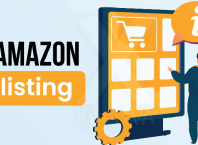A brand is so much more than the product on sale, it is the essence of a company and yet a product is one of the things people associate with a brand the most. Yes, a product gets the sales which generate revenue for the brand- but what we as a shopper find more attractive is the brand itself. Think about buying clothes. You’re more likely to select clothes from a popular brand than a startup, for example, because we’re more aware of that brand through advertising and marketing.
Still, not every brand is established enough to win the appeal of the masses – and that’s what we’re going to explore today. What are the smaller details that start a small brand’s upward trajectory?
Contents
The Right Type Of Branding For Your Audience
The style of branding you decide will set precedence for your journey. Yes, branding changes over time, but the initial decisions pave the way for success. Take a look at the history of the branding for Coca-Cola to see how branding subtly changes over time.
Picking the correct style of branding for your audience, however, isn’t something that will change. Your audience controls your brand, and your audience is unlikely to change. Let’s look at two polar opposite industries and audiences to put that into an example.
A company selling aluminum rolled products is likely to have a business-based audience, most likely selling business to business (B2B). A company selling trendy fitness clothing is more likely to appeal to a younger audience. The two would need a completely different approach to branding.
A business-to-business brand would need a crisp, smooth, professional approach to branding. A business selling to a younger audience can afford to be more fluid, trendy, and bright. Do you see the difference?
Differentiating From Competition
Now you have to do something that sets you apart. Every brand has a story and a motive, but to set yourself apart from the rest of the best, you have to give something more. You could try this by doing competitor research to identify areas for differentiation.
Typically, you can set yourself aside from competitors by offering something they don’t. Take Tesla as an example – a company that has a 92% customer satisfaction rating. They separate themselves from competitors by allowing customers to be in complete control of their buying journey without pushing sales.
Use The Power Of Psychology
The power of psychology and branding is massive. Shoppers like to know they can emotionally connect with a company and the products they sell.
They’re the top cosmetics company that trumps Sephora and BOMB cosmetics. Why? They’re committed to selling to the girl that’s had enough. They’ve managed to form an emotional connection with their consumers through an everyday struggle that females experience.
Find a way to connect emotionally to your customer’s needs, and you’ll put yourself miles ahead of some of your competitors.
It’s truly the minor details that matter. It’s not about the product but rather the reasons behind selling a product or service and the connection to the customers that make the difference. How will you set your brand apart from the rest?












